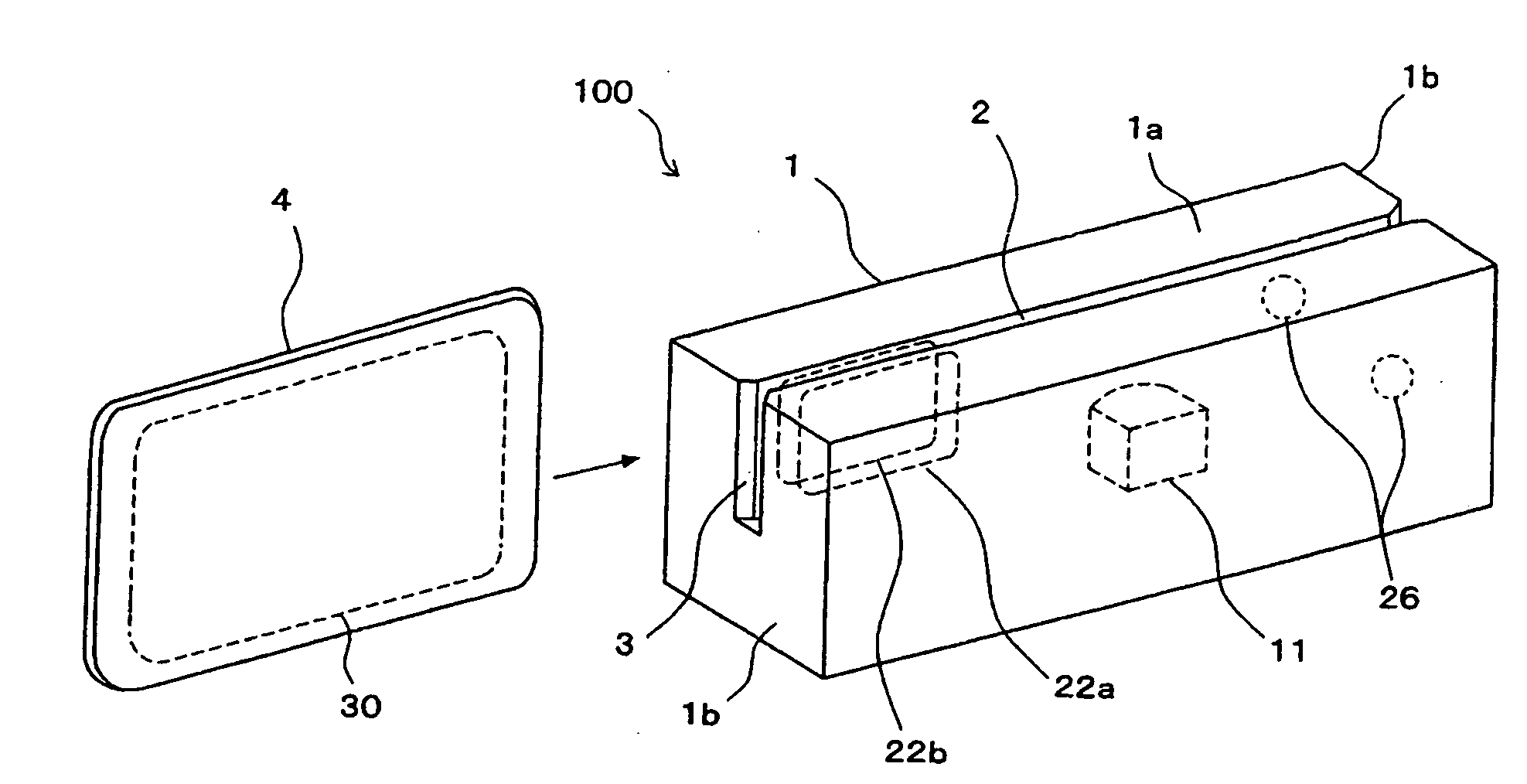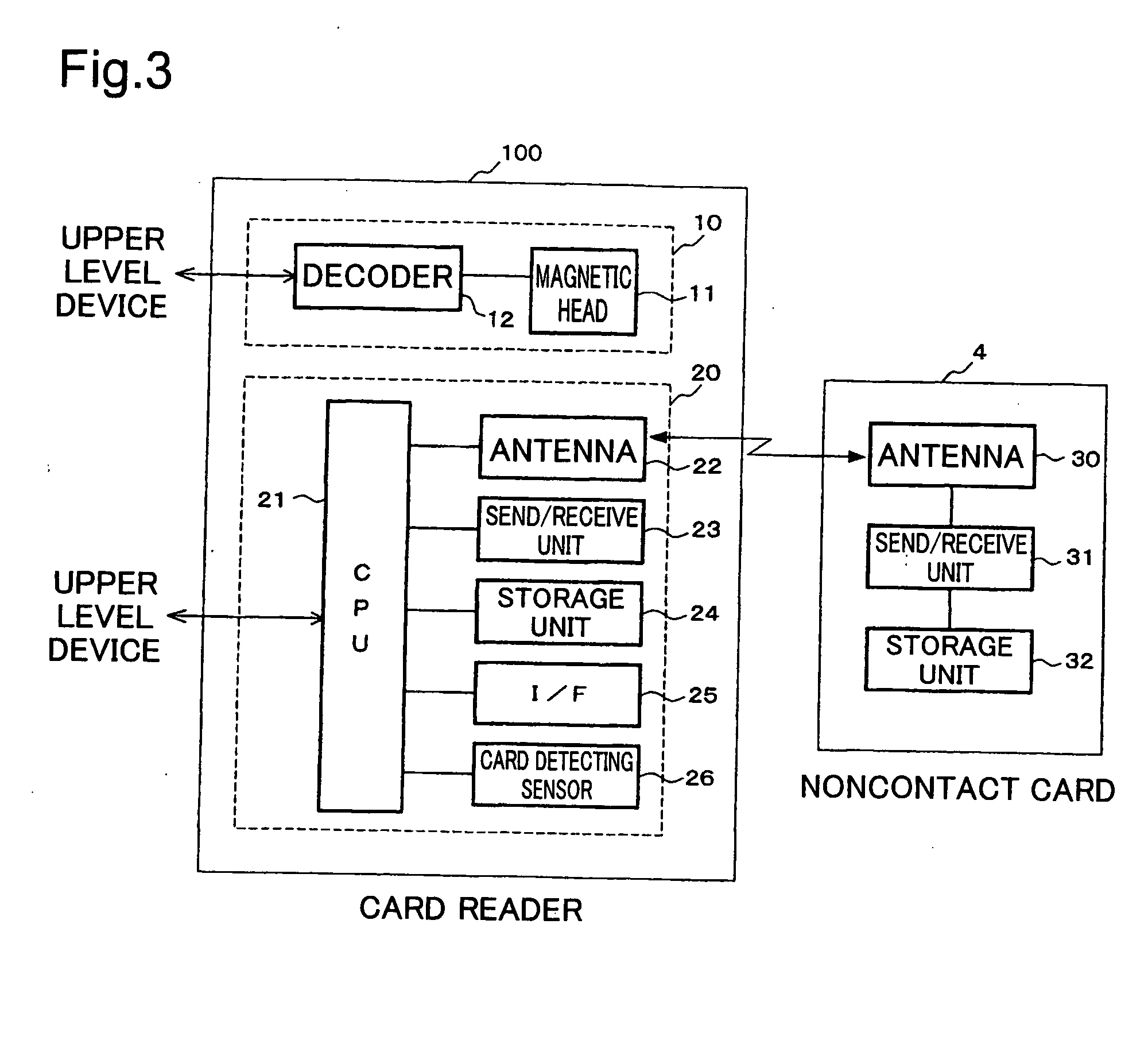Manual noncontact IC card reader
- Summary
- Abstract
- Description
- Claims
- Application Information
AI Technical Summary
Benefits of technology
Problems solved by technology
Method used
Image
Examples
Embodiment Construction
[0036]The preferred embodiments of the present invention will be described in detail below with reference to the accompanying drawings. FIG. 1 is a perspective view showing a manual noncontact card reader (hereinbelow termed simply “card reader”) pertaining to an embodiment of the present invention. 100 denotes a swipe type card reader having a card transport path 2 formed in a main body 1. This transport path 2 opens onto the upper face 1a of the main body 1 as well as onto both end faces 1b; the opening on a first end face 1b of the main body 1 constitutes a card insertion slot 3 for inserting a card 4 in the direction of the arrow. The card 4 is a noncontact card furnished with a loop antenna 30. A pair of loop antennas 22a and 22b for communicating with the loop antenna 30 of the noncontact card 4. The pair of loop antennas 22a and 22b is disposed in opposition across the transport path 2 in proximity to the card insertion slot 3 of the transport path 2. Accordingly, the antenna...
PUM
 Login to View More
Login to View More Abstract
Description
Claims
Application Information
 Login to View More
Login to View More - R&D
- Intellectual Property
- Life Sciences
- Materials
- Tech Scout
- Unparalleled Data Quality
- Higher Quality Content
- 60% Fewer Hallucinations
Browse by: Latest US Patents, China's latest patents, Technical Efficacy Thesaurus, Application Domain, Technology Topic, Popular Technical Reports.
© 2025 PatSnap. All rights reserved.Legal|Privacy policy|Modern Slavery Act Transparency Statement|Sitemap|About US| Contact US: help@patsnap.com



